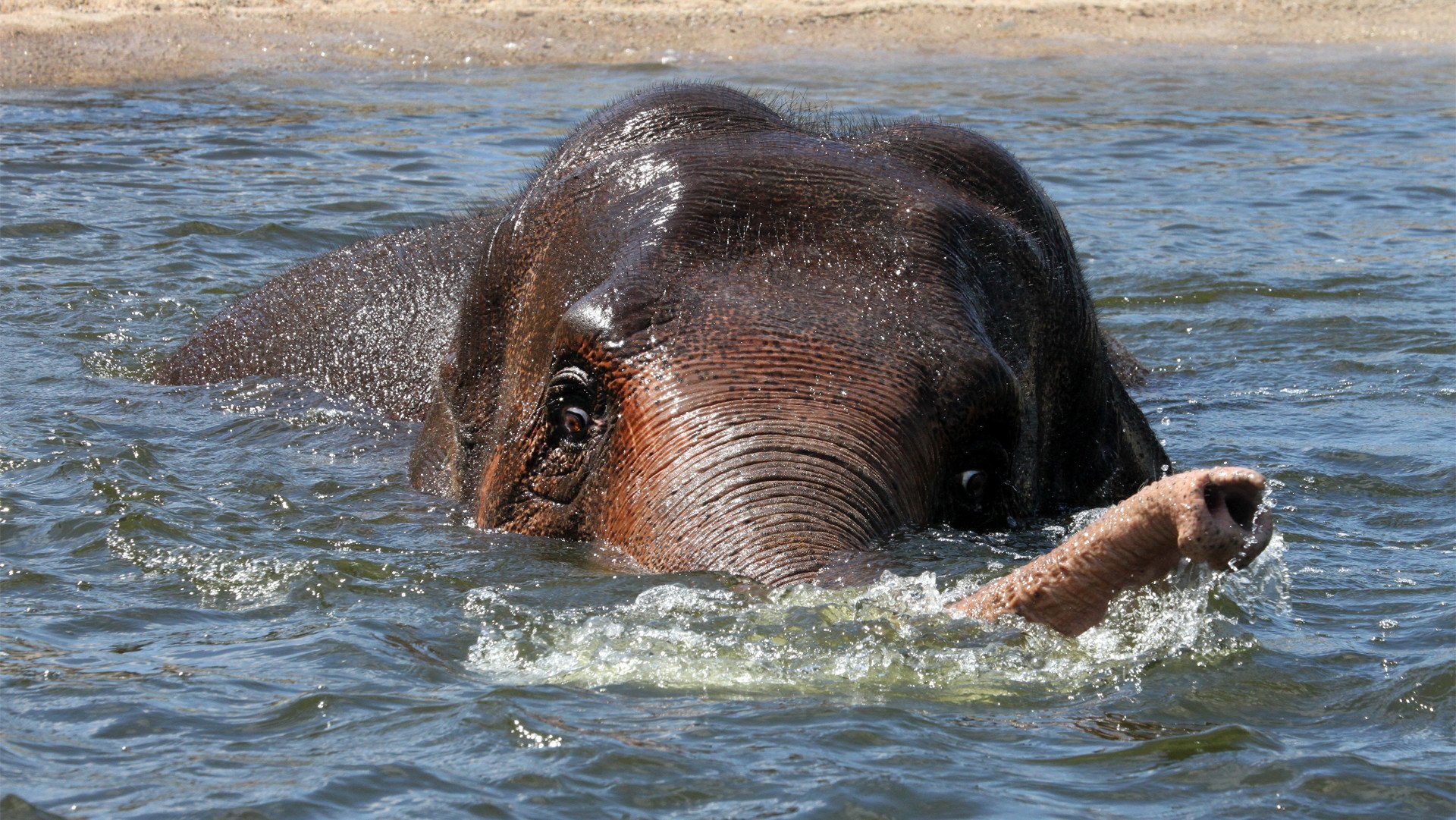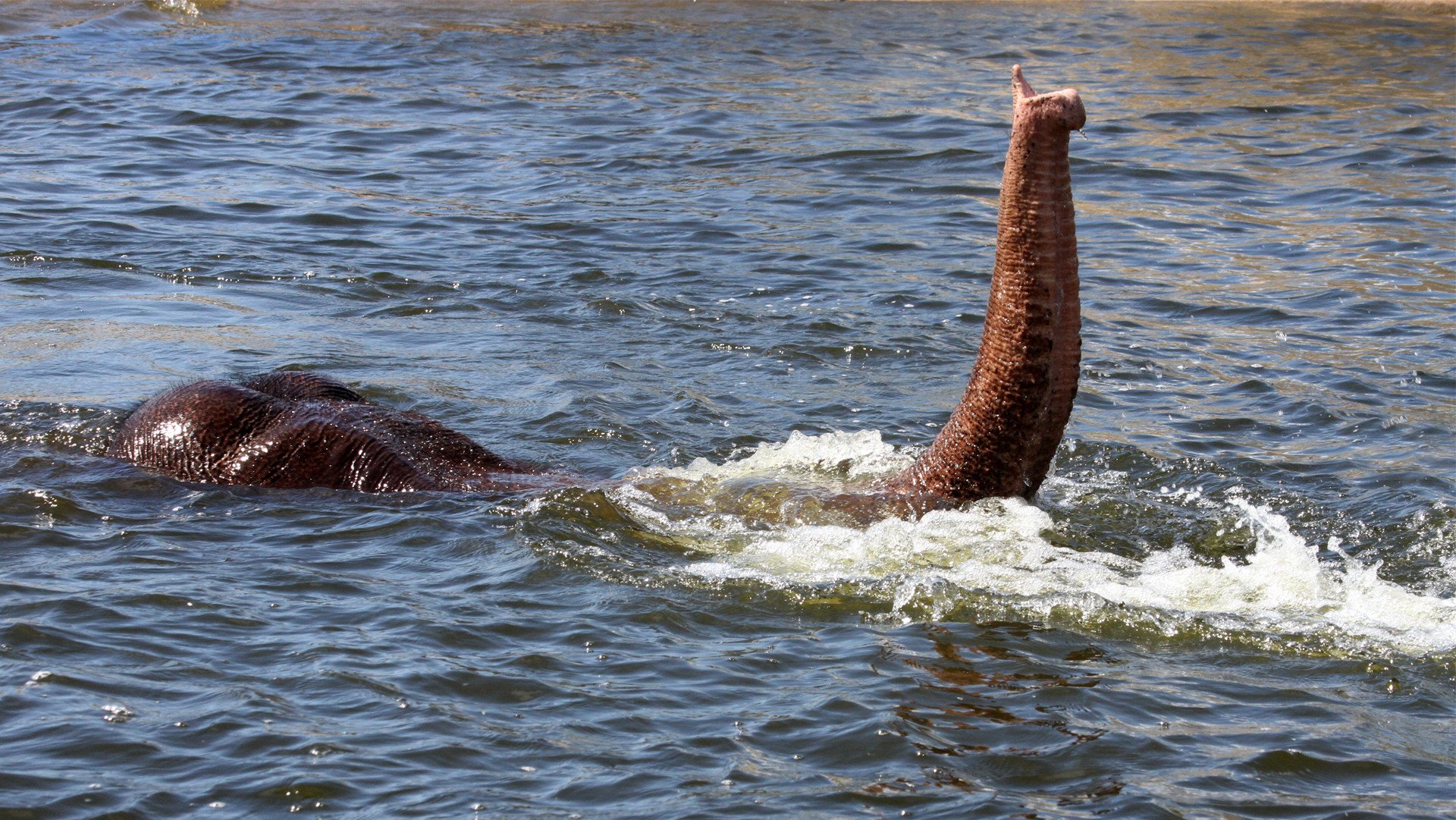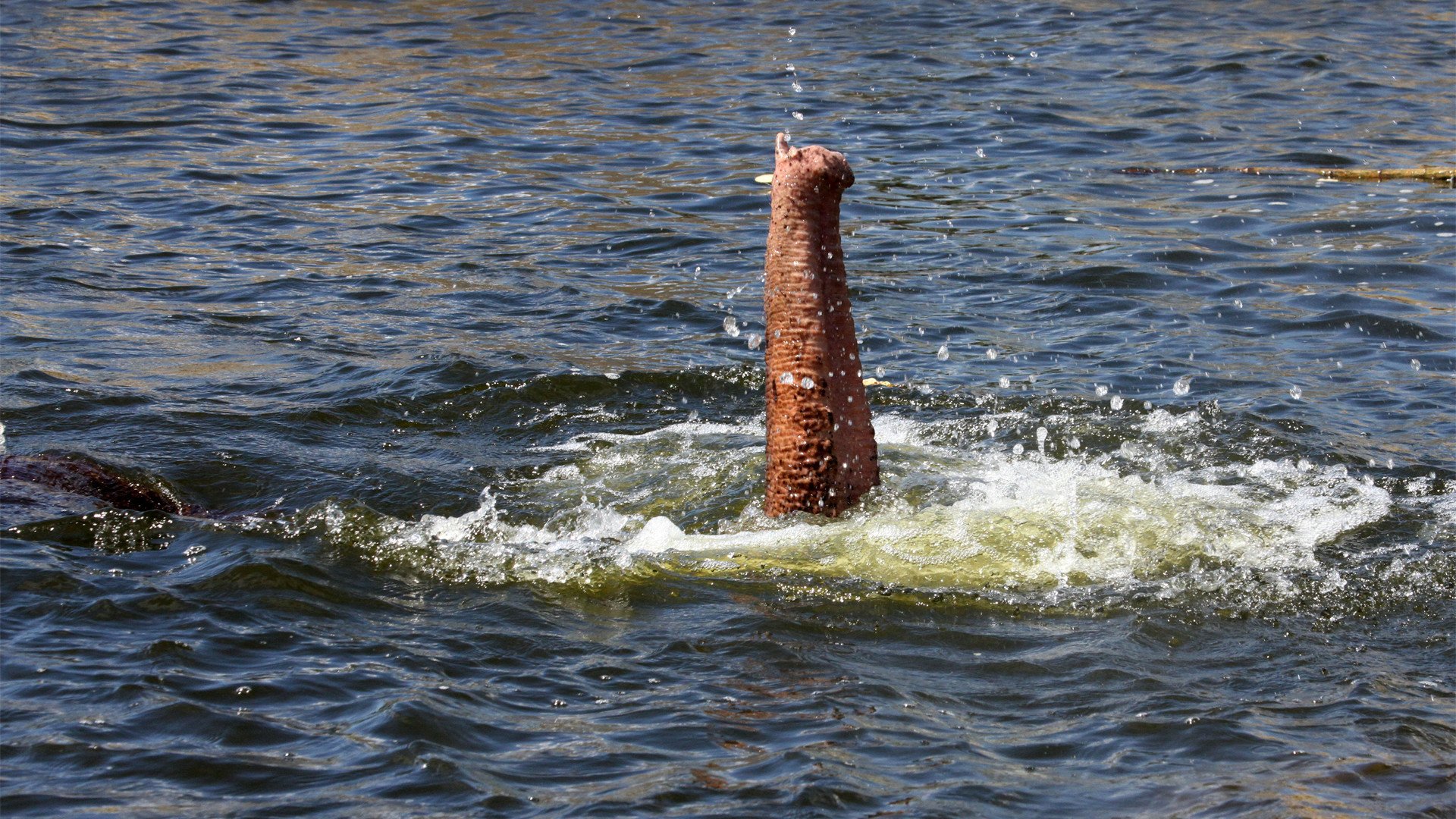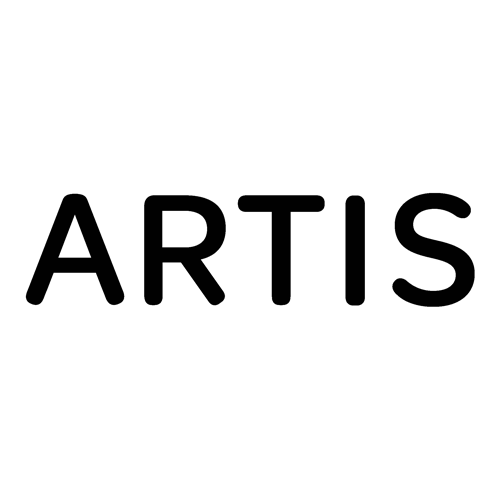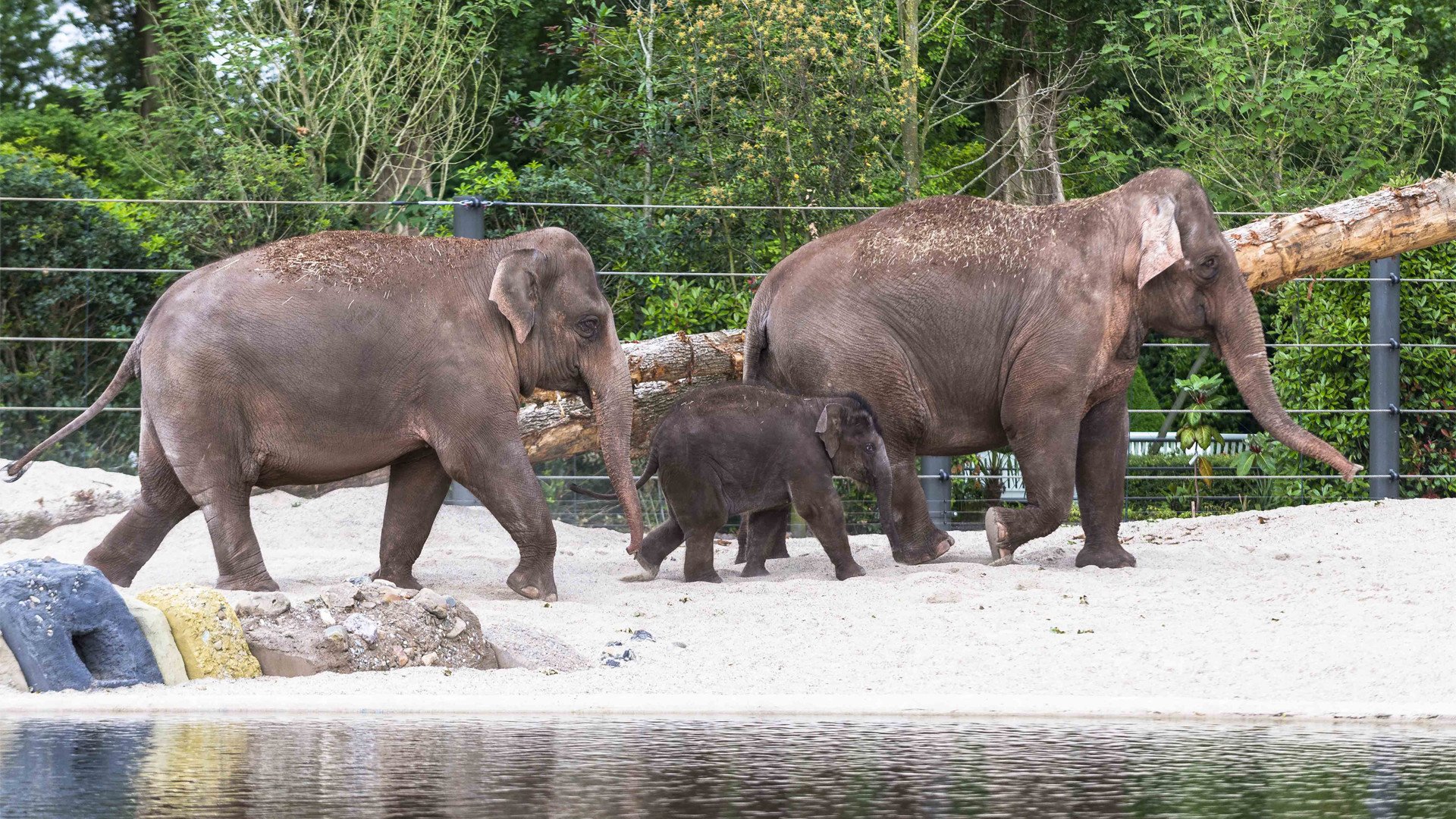
Herd displays social bond at opening of elephant enclosure
– June 13, 2017
The three female Asian elephants explored their new outdoor enclosure at ARTIS this morning. The gates opened and they flapped their ears as they stepped into their new living environment. This behaviour is a sign of positive excitement. The calf ran back into the indoor enclosure several times, closely followed by her mother and sister; elephants have a strong social bond. It took a while before the elephants approached the water.
It has taken four years of work on the enclosure to ensure that it meets the elephants' needs as closely as possible, so that they are able to exhibit their natural behaviour. In an elephant herd, that includes physical activity, swimming and eating. The enclosure contains a mud pool, a scratching tree and Amsterdam canal water to swim in. The long-awaited expansion of the outdoor enclosure has come to fruition thanks to support from many parties. ARTIS is creating more space for animals and plants, and for education and cultural heritage. With this in mind, part of the car park has been turned over to the elephants.
Matriarchy
Elephants live in groups of females, a matriarchy. One female elephant, the matriarch, is in charge. Bulls, the male elephants, live alone or together in small herds, and only involve themselves with the females when they want to mate. With the new outdoor enclosure, ARTIS can keep a bull permanently within the framework of the European breeding programme. It is estimated that only 45,000 Asian elephants (Elephas maximus) remain in the wild, as well as 18,000 in captivity (working elephants, temple elephants, circus animals). The Asian elephant lives in Southeast Asia, India, Sri Lanka, Nepal and South China. Mankind has been chipping away at this habitat over the last century, encroaching on it for farming, among other things.
Rocky landscape and water
The eight rocky outcrops in the outdoor enclosure are particularly noteworthy. The animals can use them to hide from each other, as well as to enjoy different environments: in the wind or sheltered from it, in the sunshine or in the shade, in the warmth or in the cool. Various enrichment structures have been added to the rocky areas, where the animals can find food unexpectedly, or minerals. In their natural environment, elephants play with water a lot and spray themselves to keep cool. They are naturally good swimmers. The water is deep enough for the elephants to swim. Other behavioural enrichment tools in the enclosure include a scratching tree and a mud pool, to enable them to look after their skin. Elephants use mud to protect their skin against the sun and parasites. They can use the tree to scratch their backs. The plants on the park side of the enclosure are based on the natural environment of the elephant in Asia, and on the Entrepotdok side are trees and plants from swampy environments. The diversity of the vegetation reflects the diversity in the natural habitat of the Asian elephant.
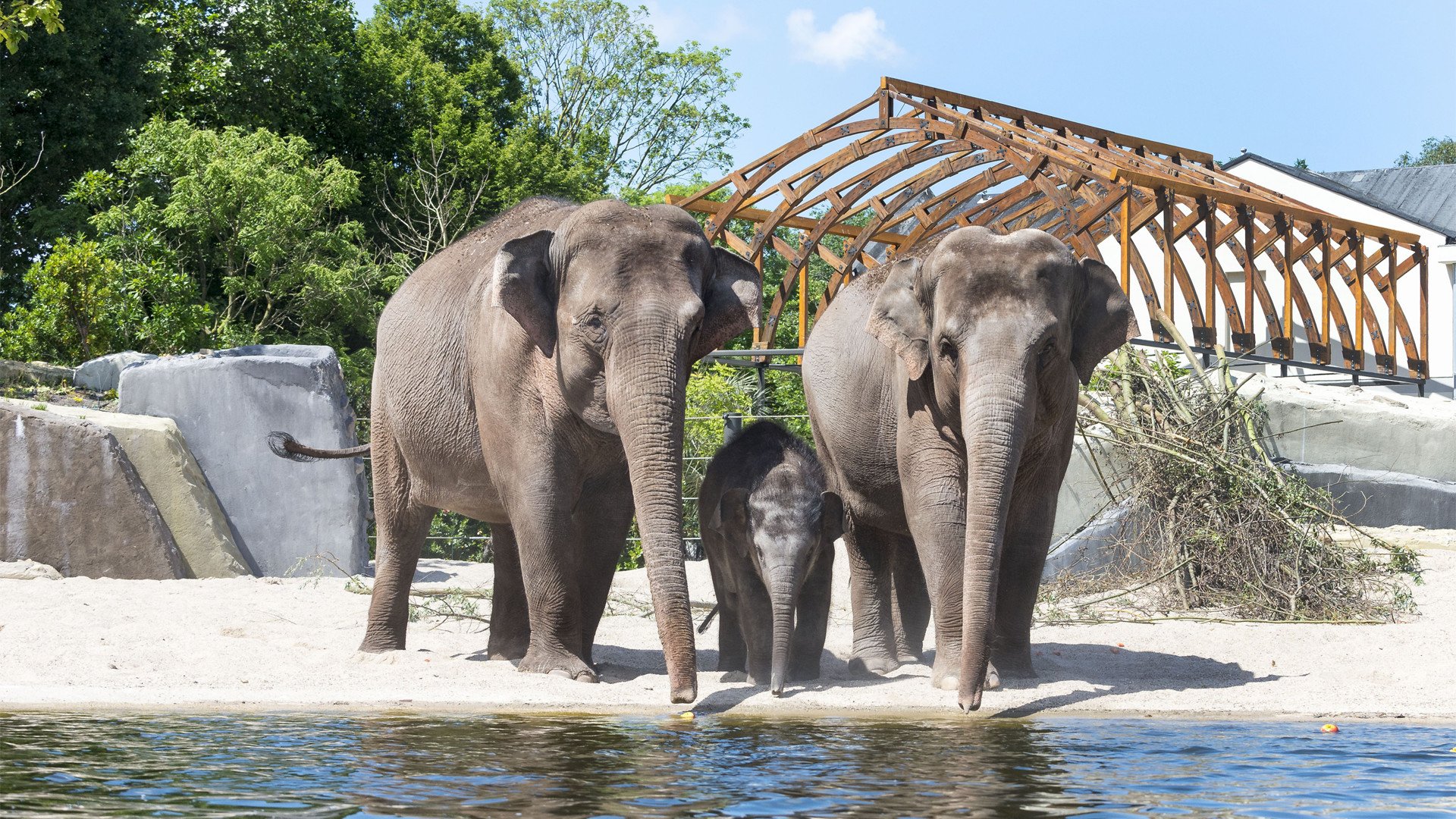
Kingfisher and bats
As a green oasis in the centre of the city of Amsterdam, ARTIS attracts a lot of native wildlife, and we are constantly aware of that. In the rocky outcrops in the elephant enclosure, we have built breeding cages for sparrows, and a kingfisher wall. This is a place for the kingfisher to nest. Four bat boxes have been built where bats can hibernate and roost - sleep in large groups.
Swimming
Elephants are born swimmers. They propel themselves in the water with their legs and can use their trunks as snorkels.
